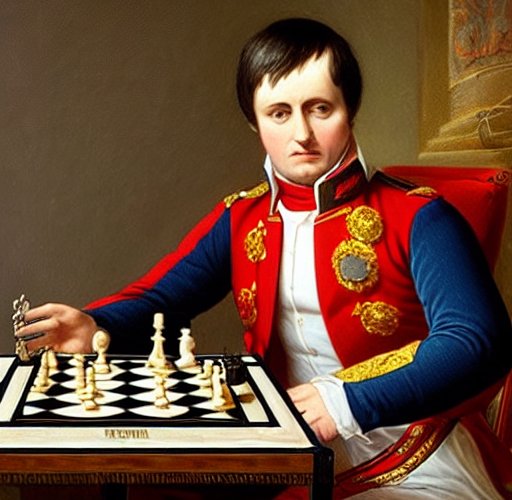The chess game between Napoleon Bonaparte and the Count of Schouvaloff took place on the island of Elba in 1813, where Napoleon was exiled after his first abdication in 1814. The Count of Schouvaloff was a Russian diplomat and a skilled chess player who was visiting Elba at the time.
According to legend, the game was played during a stormy night by candlelight in a small room in Napoleon’s residence. The stakes were high, with Napoleon allegedly offering to exchange one of his generals for the Count’s queen if he won the game.
The game itself was a tense and exciting affair, with both players demonstrating their skill and strategy. Napoleon played with the white pieces and opened with 1.e4, to which the Count replied with 1…e5. The game followed a popular opening at the time, the Giuoco Piano, and both players made strong moves in the early stages.
However, the game took a dramatic turn when Napoleon sacrificed his bishop with 6.e5, offering a pawn in exchange for control of the center of the board. The Count accepted the pawn, but this allowed Napoleon to launch a powerful attack on his king with 7.exf6.
Despite this setback, the Count played resourcefully and managed to defend his position. Napoleon attempted a series of sacrifices to break through his opponent’s defenses, but the Count was able to counter each of them. In the end, the game ended in a draw by repetition of moves.
While there is no record of the actual game or the bet that was supposedly made, the legend of the chess game between Napoleon and the Count of Schouvaloff has become part of chess lore and is often cited as an example of the strategic and tactical brilliance of both players.

e4 e5
Nf3 Nc6
Bc4 Bc5
O-O Nf6
d4 exd4
e5 d5
exf6 dxc4
Re1+ Be6
Ng5 Qd5
Nc3 Qf5
g4 Qxf6
Nd5 Qd8
Rxe6+ fxe6
Nxe6 Qd6
Ndxc7+ Kd7
Bf4 Qe7
Qf3 Raf8
Qd5+ Bd6
Bxd6 Qxd6
Nc5+ Kxc7
Ne6+ Kd7
Nc5+ Kc7
Ne6+ Kd7
Nc5+ 1/2-1/2

